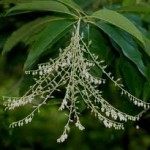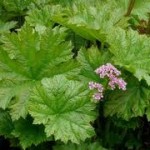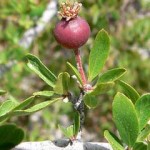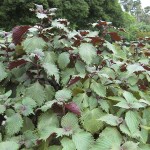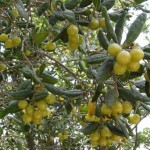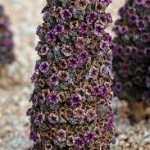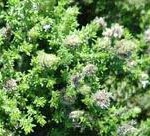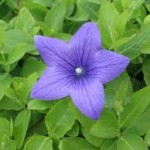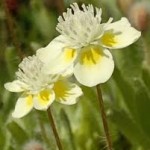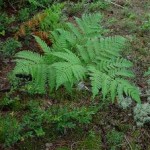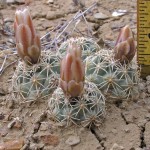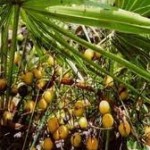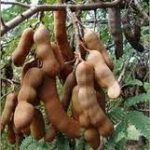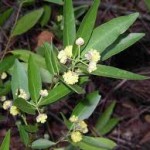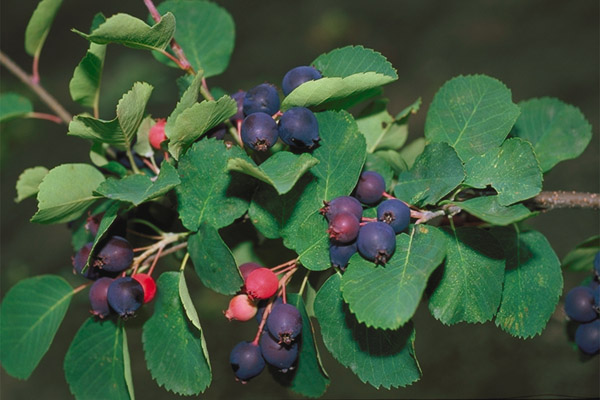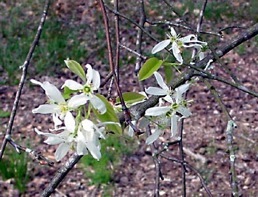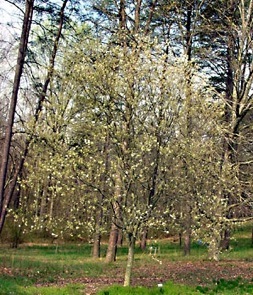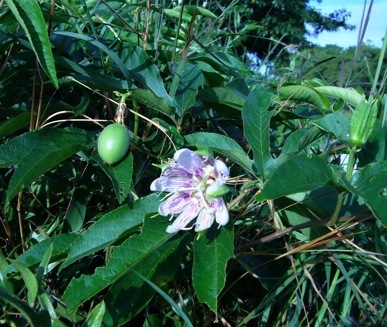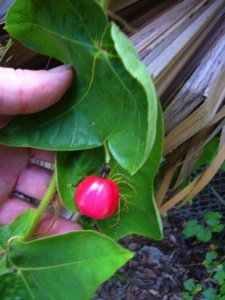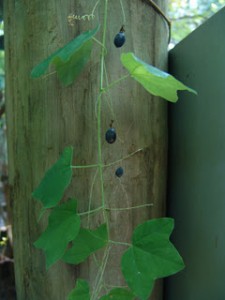Articles
Delicious and deadly, that’s ackee
- Acorn Grubs: Bait, Trailside Nibble (2)
Yes, this is about eating grubs. Deal with it.
Without the expertise of Charles E. Williams and the Michigan Entomological Society, Department of entomology,…
- Acorns, or Oak Nuts? (1)
It seem like a little thing that grew into a big problem, just like the edible I was writing about.
I had several requests to do something about acorns.…
- Acorns: The Inside Story (27)
Acorn: More than a survival food
The first time you eat an acorn it makes you wonder what the squirrels are going nuts about. As the bitterness twists… - Agave, Century Plant
Century Plant: Edible Agave Americana
If you like tequila, thank a bat. If that’s not possible, thank a humming bird or a moth. Those three pollinate the…
- Alligator a la Carte (5)
I caught a small alligator once. I was fishing for bass in a golf course water trap behind an apartment complex in Titusville, Florida (that’s west across… - Alligator Weed
Alternanthera philoxeroides: Exotic Munch
If you have alligators you have alligator weed. That’s a little odd because alligator weed is a native of…
- Alternate Pepper of Brazilian Pest? Brazilian Pepper is a personal unknown
- Amapola, Sea Hibiscus, Rope Mangrove
Hibiscus pernambucensis: Walking Lunch
The Amapola is on the go, but unlike the “walking” mangrove, the Amapola crawls.
There is something of a…
- Amaranth: Grain, Vegetable, Icon (3)
Amaranth, the forgotten food
A book could be written about amaranth, and probably has, if not several.
A grain, a green, a cultural icon, a religious…
- Amaranth Identification:
Sorting out some amaranths
- A Matter of Attitude
“Yuck.”
That word has been in my mailbox lately, sprinkled through like spice on an entree. It reminds me of what a great language English is.
English…
- American Lotus: Worth Getting Wet For (1)
More American than apple pie
Nature fights back.Much of Florida is giving way to housing. For several years I passed a large abandoned pasture with a dry…
- American Nightshade: A Much Maligned Edible (5)
Solanum americanum: Food or Poison?
Anyone who’s done some foraging has seen the “Black Nightshade” also called the “Common Nightshade” and (DRUM ROLLLLLLLL…
- Annona Quartet
The Annonas Four: Sugar, Sour, Custard, Pond
Many species and a few family of plants sit on the cusp of edible, non-edible, among them the Annonas, tropicals… - Antikythera Mechanism
The Antikythera Mechanism is unique, kind of like a monotypic genus plant. In fact, this short article was originally written as the introduction for the…
- A Pitch For Spruce Gum: Real spruce gum is not easy to chew. It is not soft or sweet. Hard and crumbly is more accurate along with pieces of bark and bits of insects.
- Apples, Wild Crabapples
Malus sieversii, Hard-Core Apples
Wild Apples are one of the most common over-looked foraging foods. People take one taste, spit it out, and go on their… - Are Raw Vegetables Healthy for Humans? (4)
The quick answer by most would be yes, the presumption being man ate raw vegetables for a long time and is better suited to them, and them to him. But, whether…
- Are You A Cook Or A Baker?
I am often asked about herbal medicine. My answer to the inquirer is often a question: Are you a cook or a baker? Their answer is instructive.
While one…
- Armadillo: Possum on the Half Shell (2)
Armadillo Cuisine: Cooking a Hoover Hog
Armadillos are an overlooked food animal, not protected by law, available throughout the year, and good tasting. And… - Attitude Makes The Difference
Facts don’t disappear in life, but in the end attitude is their equal. Water hyacinths can demonstrate that.
If you know much about the state of Florida…
- Australian Pine (1)
Casuarina equisetifolia: Dreaded Edible
It is truly fitting that the Australian Pine ends up on a site dedicated to edible plants because where it has been… -
What do you do when the description of a plant doesn’t fit? The answer depends on how far off the description is: You might have the wrong plant.
If it is…
- Balloon Vine, Heart Vine, Heart Seed
Cardiospermum halicacabum: Edible Leaves
For a tropical plant, the Balloon Vine can take cold weather, growing from west Texas north to Montana, Florida…
- Bamboo Doesn’t Bamboozle You
Bambusa
Do not tell me you don’t live near bamboo. I grew up in 50-below zero Maine and we had bamboo in front of the house for decades. In fact, the… - Bananas: More Than A Yellow Frou Frou Fruit (5)
Bananas Trees: Survival Food
Yes, everyone knows bananas are edible, as are their starchy cousins, the plantains. One doesn’t think of banana or plantain… - Barnyard Grass (8)
The first time I saw Barnyard Grass was decades ago in a real barnyard near a drain spout. I was with forager Dick Deuerling who identified it for me.…
- Basswood Tree, Linden, Lime Tree
Tilia americana: Forest Fast Food
My first recollection of basswood was not on the supper table but rather helping my father make pipes.First we’d…
- Bauhinia: Pretty Eats
Bauhinias’ Beauty
It’s called the Camel Foot Tree, the Cow Foot Tree, the Mountain Ebony Tree, the Orchid Tree, and the Hong Kong Orchid Tree. I ignored it…
- Birches: One could easily write a book about Birches because they are so valuable to foragers.
- Beach Bean, Bay Bean (2)
Canavalia maritima, Rosea, Beach Bean
It’s the tank of beans: Three inches long, an inch wide and very thick. And with good reason, it lives near the… - Beach Orach, Crested Salt Bush
Atriplex cristata: Pigweed by the Sea
Anyone familiar with the Goosefoot family will see the Beach Orach and presume it is probably edible, and it is.
A…
- Beautyberry: Jelly on a Roll (23)
Beautyberry: Callicarpa Americana
The Beautyberry is squirrel’s version of take out.Squirrels will often break off a branch a foot or two long and…
- Beech, American
Fagus grandifolia: The All-American Beech
Tree trivia: Beechnut chewing gum had nothing to do with the Beech tree or the seeds it produces. It was, however,…
- Bees In Litigation
The last time I visited relatives in Greece, September 2006, I had “tea” with one of two then-living first cousins of my grandmother, both in their 90s,…
- Before There Were Baked Beans
Baked beans is about as traditional a New England meal as one can get… That and boiled dinners. Every Sunday for decades we had boiled dinner. Potatoes,…
- Begonia Bonanza
Waxing about Edible Begonias
It was on Rock Springs Run, some 20 years ago here in Florida, when I first saw them, just above the variable water line. I… - Betony: Rich Root, Poor Root (5)
Stachys Floridana, Culinary Pretender
I have read from a good source that all Stachys are edible. I politely doubt that for three reasons. First there are 300… - Big Caltrop: If you’re an adult with aging eyesight Kallstroemia maxima when first spied can look like purslane. A closer examination shows it is not.
- Binomial Nomenclature
Most of us go by two names. So do plants. That’s Binomial Nomenclature. That is both good and bad. It’s good in that two people on different sides of the…
- Birches: One could easily write a book about Birches because they are so valuable to foragers.
- Bird Peppers
Capsicum annuum var. glabriusculum: Hot Eats
Did y0u know hot peppers grow in the wild? From Central American north to Arizona east to Florida then up the…
- Bitter Melon (6)
Bitter Melon, Bitter Gourd, Balsam Pear: Momordica Charantia
If the Balsam Pear did not exist a pharmaceutical company would invent it. In fact, there… - Bitter Lettuce
Launea intybacea: Edible Bitter Lettuce
The plant came first, and it’s anybody’s guess to what its scientific name is.
Every botanical wonderkin thinks…
- Bittercress and Kissing Crucifer Cousins
Cardamine pensylvanica: Petite Pot Herb
The first time I saw Bittercress I knew it had to be an edible. I just didn’t know which one.How did I know? Plants…
- Black Calabash: It started with spotting a blossom while teaching a foraging class.
- Black Cherry: Chokecherry’s Better Cousin (3)
Prunus serotina: Better Late than Never Cherry
Think of the Black Cherry as a chokecherry with some of the choke removed.
Not a 100 feet from the…
- Black Ironwood, Leadwood
Krugiodendron ferreum: Ironwood M&MsGreen twigs of Black Ironwood will sink in salt water. It’s that dense.The Black Ironwood was…
- Black Medic (2)
Medicago Lupulina: Grain and Potherb
I debated a long time whether to include Black Medic as an edible. There are several plants in that category and over… - Black Walnuts and Butternut
Juglans nigra and butternut, too!
I didn’t see my first Black Walnut tree until about 16 years ago. It so happened that the two places I lived the longest,…
- Blackberries, A Forager’s Companion (1)
Blackberries: Robust Rubus, Food & Weed
Anyone who forages will eventually collect a few blackberries, and thorns. Blackberries are among the best known… - Bladderwrack
Fucus vesiculosus: Edible Bladderwrack
Bladderwrack can wrack your brain.Why? Because in some places it has bladders and is textbook perfect. And in others…
- Blolly, Beeftree
Guapira discolor: A Blolly by Golly
The Blolly confounded me when I first saw the tree for it was growing by itself in a park. The fruit is quite distinct, a… - Blue Porterweed, Bottom Up!
Stachytarpheta jamaicensis: Near Beer
Should the civilized world come to an end and you have a hankering for a stout beer you’re in luck: You can make one… - Blueberries, or Huckleberry’s Kin
Vacciniums: Am I Blue?
Blueberrying was a family tradition. The only debate was did you pick them clean, or did you pick leaves, bugs and all then clean…
- Botanical Bachelor
As a seasoned life-long bachelor I had my pickup line all crafted and rehearsed, so I could say it naturally at the right moment when my Dream Lady came near.…
- Bottlebrush Tree:
- Bougainvilleas: Bougainvilleas are often referred to as a toxic plant.
I’m often asked during my classes why I mention many plants that can be used to make tea. There are two answers:
- Brookweed: Brookweed is an edible plant few know a lot about these days. Even Professor Daniel Austin, who managed to write 909 pages about ethnobotany, could only scrape up one paragraph.
- Brown Anoles (3)
“Did you clean them” I asked a friend who might want to remain anonymous.
“No” he said.
“You cooked them whole?”
“Yes.”
“You ate them head, tail and…
- Browne’s Savory: Clinopodium Browneii
The Mighty Minty Micromeria Browneii
Sometimes in central Florida you will drive past a car accident on the interstate, or another road, and smell…
- Budget Cut Benefits
Two effects of the economic times are influencing foraging. First is an increase in the number of people who are putting food on the table by foraging. The…
- Bug-a-Boo’s or Grubs Up (5)
On this site are several articles about edible insects (among other creatures.) Below is an expanding collection of more than 50 edible insects. I plan to…
- Bulrush Bonanza (3)
Cattail’s Maligned Companion: The bulrush has a public relations problem. It found in the same environment as the cattail, can be used the same way, and tastes…
- Bunchberry Brunch
Munching Cornus canadensis/unalaschkensis
Discussing things little ears shouldn’t hear, they barely interrupt their conversations to pick a low Bunchberry from… - Bunya Pine: The Australian Aboriginals knew a good thing when they tasted it. So did the immigrants. It’s hard to find anyone who doesn’t like the taste of Bunya Pine nuts. But you will find people who don’t like to clean up after it because the ancient species sheds sharp leaves and heavy cones.
- Burdock Banquet
Arctium minus: Burdock’s Plus Side
I have a confession to make: When I was a kid I had a miniature corn cob pipe. And in it I smoked dried burdock leaf… I… - Buttercups: Buttercups are usually considered not edible.
- Cabbage Palm, Sabal Palmetto (4)
Heart of Palm and Controversy
The state tree of Florida isn’t a tree, but it is a weed of many edible parts.The Sabal palmetto, actually an overgrown…
- Cactus: Don’t Be Spineless (3)
Nopalea Cochenillifera: Cactus Cuisine
Be brave when you collect cactus.Of course, good gloves and tongs help. With those tools you can have a very…
- Caesar Weed Sampler (5)
Urena Lobata: Cash crop to noxious weed
Once it was an invited money-maker, now it is a hunted money spender: Caesar weed, cash crop to noxious weed.We have…
- Camphor Tree: Cinnamon’s Smelly Cousin
Campy Camphor: Not Just For Grandma
One would never guess Camphor trees are not native to Florida, or the South. One also probably wouldn’t guess they…
- Candlestick Tree: If you are meandering through a botanical garden in a warm climate and you see a tree growing four-foot-long candles it might be Parmentiera cereifera.
- Candyroot
I will be the first to admit my experience with Candyroot is very limited. In a flower book I carried with me on field trips some 20 years ago with Florida…
- Canna Confusion (1)
How many species of Canna are there? Used to be perhaps 100 but now there are 20 or so, plus one Scottish island with a …ah.. population problem. And…
- Cannibalism
There is no way to approach the topic of cannibalism without offending someone. Apologies offered. Cannibalism, the last great social taboo, is committed…
- Canoeing Rock Spring’s Run & The Wekiva
Canoes are the best way for you to sneak up on deer, unless of course you’re the kind of canoeist who uses the paddle and canoe like a drum set.On a…
- Can We Eat Grass? That simple question has a complex answer: Yes, no, and maybe. It’s a topic I explored in a recent Green Deane Newsletter and the basis for this article.
- Carolina Bristle Mallow (1)
Modiola caroliniana: A Bristly Drink
No one knows how many species of edible plants there are in the world, or in North America. In the former the guess is… - Carpetweed (3)
When it comes to Carpetweed you need to know only two things: It grows nearly everywhere, or will. And the plant above ground is edible. To quote Cornucopia…
- Cassia Clan aka Senna
Cassia occidentalis: Faux Coffee & Greens
You either cook the Cassia Clan right or they make you sick. Any questions?Now that I have your attention,…
- Cast Iron Cookery, Buying and Restoring (3)
Cast Iron Pans: Yesterday is tomorrow
Many books have been written about cast iron cookware. I will try to say a few things here perhaps not said elsewhere.B…
- Cast Net Junkie
I will admit to being a cast net junkie.
Some people collect coins or stamps. I collect cast nets. I started throwing nets some 30 years ago and have been…
- Cast Nets: Throwing Your Weights Around
Throwing Your Trouble Away
I love cast netting. I own five of them and rarely come home empty handed. I also never throw for bait: I go for the… - Cattails – A Survival Dinner (3)
Cattails: Swamp Supermarket
The United States almost won WWII with cattails.No green plant produces more edible starch per acre than the Cat O’ Nine…
- Caulerpa
Caulerpa: Warm-Water Salad and Pest
Caulerpa ssp.would seem to be a paradox. Eaten around the world by thousands for thousands of years but called a killer… - Cereus Today Not Tomorrow
Getting Down To Cereus Business
There are three things irritating about Cereus other than their spines: 1) several botanical names for the same plant; 2)…
- Ceriman, Delicious Monster
Monstera deliciosa: Hmm Hmm Good!
Large Delight. That’s what Monstera deliciosa means…. It was an edible I did not know about until pointed out to me by my… - Chain of Contamination
In police work there is the chain of possession. When evidence is collected, who has it, and where it’s kept is recorded constantly. With food we might call it…
- Chaya: The Spinach Tree (7)
Cnidoscolus aconitifolius: Tree Pot Herb
I knew about Chaya long before I ever saw one.It’s in the Cnidoscolus genus and has two relatives in the…
- Che: Che is not the tree it used to be.
- Checkerberry cum Wintergreen
The Teaberry Shuffle
I saw Gary Vickerson eat an earthworm I found near a checkerberry plant. Personally I preferred the Checkerberry.Before I go any…
- Chestnuts: Chestnuts have done more than just disappear from the landscape: They have dropped out of our lives save for a token appearance at Christmas.
- Chewstick, White Root
Gouania lupuloides: How to Get Chewed Out
The modern toothbrush was unknown in Europe until 1498, the year it came from China. Before that people…
- Chickasaw Plum: Yum (5)
Chickasaw Plum: First Springtime Blossom
Every spring, three wild plums put on a show locally: The Chickasaw, the Flatwood, and the American. They…
- Chickweed Chic (11)
Chickweed Connoisseurs
My being green really paid off this spring: For the first time (2009) I have chickweed in my lawn. I don’t know how it got there but it… - Chicory History
Cichorium intybus: Burned to a Crisp
Chicory was not a common plant where I grew up or where I live. But I remember the first time I saw it, in 1990, in a… - Chinese Box-Orange, Tsau Ping Lak
Atalantia buxifolia: Wine-Cake Thorn
The Chinese Box-Orange is one of my botanical mysteries. I know it is edible but I don’t know how… But I may still… - Chinese Elm Take out
Chinese Elm: A tree that doesn’t go Dutch
Sometimes a wild edible can be under your feet and you never notice, or in this case, over your head.Anyone with…
- Chinese Tallow Tree (1)
Popcorn Tree, Florida Aspen, Tallow Tree
There is a lot of debate whether the white waxy aril of the Chinese Tallow Tree is edible or not…
- Chocolate Vine, Abeki: Any plant with “chocolate” in the name is sure to get attention. And when it’s also called an invasive species then even more so.
- Christmas & Maiden berries
Crossopetalums: Edible Berries & Medicine
When I was an undergrad in music it was a revelation to learn that by studying music you also studied history:…
- Christmasberry, Wolfberry, Goji (1)
Christmas, Wolf, Goji, They’re All Berries
It’s called the Christmasberry even though it fruits in April, and while it is one of several “Christmas Berries”… - Chufa For Two (1)
Cyperus esculentus, C. rotundus: Serious Sedges
There are two edible Cyperus locally: One that tastes like hazelnuts and one that smells and tastes to me… - Cider Barrel Rules (2)
My mother was a horrible cook.I used to joke she thought I was a Greek god: Every meal was either a burnt offering or a sacrifice.I learned to cook…
- Cider Hard, But Quick and Easy (22)
How To Make Hard Cider
You can make hard apple cider the difficult way, or the quick and easy way. I prefer the easy quick way. I’ve made a lot of beer and… - Citron Melon, Tsamma (6)
Citron Melons: Abandoned Preserves
Are they edible?Even people who do not forage want to know if the little watermelons they see in citrus groves are…
- Civilized Food
While making my purslane video I was thinking back to a family friend who refused to eat purslane because it was a “weed.”
It had taken over about one third…
- Climbing Fig, Creeping Fig (3)
If there is one thing about the Internet that irritates the sap out of me it is how mistakes proliferate rather than get corrected. I have ranted about…
- Clover, Available Around The World (7)
Clover, Available Around The World
Hay may be for horses, but clover is for people…well…. almost.I was forever nibbling on clover blossoms when I…
- Coco-Plums
Chrysobalanus icaco: Multi-Colored Fruit
Coco-plums are three quarters patriotic: They can be red, white, or blue ( and yellow.)Actually, the “blue” is deep…
- Coconuts: It’s A Matter of Degrees
Coconut, An Equatorial Palm
Popular media and commercial production have made the coconut a common cultural item, even if you live thousands of miles away… - Codium Compendium
Codiums: Edible around the world
Oceanographers like to call Codium a minor seaweed because it is not commercially exploitable. Yet where it is found around… - Common Reed (1)
Some 20 years ago I pondered upon the identity of what appeared to be a very tall grass in a former marlpit in Port Orange, a few miles south of Daytona…
-
- Cooking Like A Caveman
The Mesolithic Era is not a sexy topic that will win friends and influence people at parties. But, it is something foragers should think about. If you are a…
- Cooking without Pots or Pans (2)
Mesolithic Cooking: It’s the Pitshttps://www.eattheweeds.com
How do you cook without pots or pans?It’s a question our distant ancestors never asked because pots and pans didn’t…
- Cooking Like A Caveman
www.eattheweeds.com
- Coontie Courage
Zamia Floridana: Making Toxins Edible
This plant is included here in case 1) society falls apart; 2) You live in Georgia or Florida and need starch… - Coquina: Tasty Tiny Clam
Coquina: Donax: Good Eats
Ounce for ounce there is probably no more delicious seafood than Coquina. The problem is getting an ounce of it, so we usually…
- Coral Bean: Humming Bird Fast Food
Erythrina herbacea: Part Edible, Part NotThe (eastern) Coral Bean is one of those damned if you do, and damned if you don’t kind of things. Parts of…
- Coral Vine
Antigonon leptopus: Creeping Cuisine
The Antigonon leptopus ( an-TIG-oh-non LEP-toh-puss) inspires local names everywhere it grows: Tallahassee Vine, Honolulu… - Corn Poppy
Several plants have relatives whose reputations are difficult to live down. The Natal Plum is one. Related to the oleander the delicious plum suffers from…
- Corn Smut: Mexican Truffles. Corn Smut. Raven Scat. Ustilago maydis gets more unappetizing the further one goes down its list of names. The Aztecs called it huitlacoche. The Mexicans call it a delicacy.
- Crabgrass Was King (3)
Forage, Grain, Flour, Manna, Pest
Americans did two interesting things when they moved from the farm to suburbia: They surrounded their homes with toxic… - Cranberries, Lingonberries
Get Your Annual Vaccinium Every Year
Frozen cranberries are just as sour as fresh ones.I know that because when I was a kid skating on frozen ponds in Maine…
- Creeping Cucumber: Melothria Pendula (2)
Cute Cuke! Melothria Pendula
The Melothria pendula is a little cucumber with a big reputation.
That said, when it comes to the “creeping cucumber”…
- Crowfoot Grass, True Grits
Dactyloctenium aegyptium: Staple Grain
Grasses can be a pain in the …ah… grass…First, books about grasses are few and incredibly expensive. Next,…
- Dad’s Applewood Pipes (3)
Time edits your memories. It sands off the rough edges that were once painfully sharp. It makes some moments clearer by evaporating the fog of being…
- Dahlia Pinnata
Here’s the good news: At least one species of Dalhia has edible roots. Here’s the bad news, there are some 20,000 cultivars, maybe even thousands more. A…
- Dandelions: Hear Them Roar (3)
Dandelion Wine and Coffee and SaladDandelions and I go back a long ways, more than half a century.When I was very young in Maine my mother…
- Dayflowers, Often One Petal Shy (4)
Commelina diffusa: What a day for a dayflower
Common names can be a headache when one is trying to index a plant. The plant to the lower right is commonly… - Daylily Dilemma (3)
Daylily: Just Cloning Around
The daylily, a standard plant in foraging for a century or more, has become too much of a good thing and now presents a significan… - Dead Man’s Fingers
Decaisnea fargesii: True Ghoul Blue
There are three Dead Man’s Fingers: A seaweed, a mushroom, and a shrub, all so-called because of the way they…
- Does Anyone Know What Time It Is? (2)
It is time for my semi-annual rant and wish that G.V. Hudson had a different hobby. Hudson, a New Zealander, collected insects and was a shift worker. In…
- Does The Nose Know?
What Does a Word Smell Like?
During nearly every class I have students smell three or four plants — depending upon the season — and I ask them what common…
- Dog and Cat (1)
Most Westerners would starve than eat their pet, and understandably so. There is a tacit agreement between pets and their owners. In exchange for putting…
- Doveweed
Murdannia nudiflora: Tiny Dayflower Kin
In India the Doveweed is a famine food. That should give you some idea of how it lines up in the culinary kingdom. The… - Drymaria Cordata, Tropical Chickweed (3)
Drymaria cordata: Kissing cousin chickweed
Drymaria cordata is one of those plants that confounds the mind. You know what it resembles: Chickweed. It has one… - Duckweed
A Weed Most Fowl. Do ducks eat duckweed? Yes and no. Do humans eat duckweed? Yes and no. Domestic ducks tend to eat duckweed, wild ones don’t.…
Foragers tend to ignore seaweed.
- Ear Tree, Sound Food
Lend Me An Ear Tree
Just about anyone who has spent anytime in a warm climate will some day find on a sidewalk a black seed pod that looks like a human…
- Earthworms (7)
Cooking with Earthworms
The cartoon strip BC once had its peg-leg poet write: “The bravest man I ever saw was the first one to eat an oyster raw.” - Eastern Gamma Grass: Someone who supposedly knew their grasses wrote there are no toxic native North American grasses.
- Eastern Red Bud: Pea Pods Tree (5)
Cercis canadensis: In The Bud of TimeIt’s one of those trees that if you don’t see it at the right time you’re not looking for it the rest of the year.…
- Eating In Season (1)
There is little doubt that eating certain fiddlehead greens can significantly increase ones chances of cancer. In fact, science says they cause cancer. On…
- Edible Cultivated Flowers: All 20 articles in one article
- Edible Flowers: Part One (1)Nasturtium, Calendula, Spanish Needles, Arugula, Squash, Cilanto, Bee Balm, Carnation, Dandelion, Lilac
Which blossom will be your favorite edible…
- Edible Flowers: Part Two (9)Tulips, Yucca, Begonias, Blue Porterweed, Queen Ann’s Lace, Dill, Gladiolas, Wapato, Impatiens, CitrusTulips are one of those wonderful flowers you…
- Edible Flowers: Part Three (2)Mayflower, Chrysanthemum, Cornflower, Rose, Daylily, Elderberry, Chicory, Johnny-Jump-Ups, Linden, BananaA rite of spring in the frozen north, or at…
Spiderwort, Marigolds, Rosemary, Smartweed, Pineapple Weed, Chamomile, False Roselle, Lavender, Forsythia, Borage
Apple, Fuchsia, Sweet Goldenrod, Basil, Gorse, Bauhinia, Eastern Redbud, Angelica, Honeysuckle, Eastern Coral Bean
Apple Blossom
Every seed in every apple…
- Edible Flowers: Part Six (1)Burnet, Magnolia, Fennel, Garden Sorrel, Tansy, Pink Wood Sorrel, Sunflower, Pineapple Guava, Prickly Pear, PansiesBurnet (Sanguisorba minor) is…
- Edible Flowers: Part Seven (1)Scarlet Runner Bean, Peony, Hyacinth Bean, Clover, Jasmine, Chervil, Water Hyacinth, Plantain Lily, Meadowsweet, Perennial PhloxScarlet Runner Bean is…
- Edible Flowers: Part Eight
Society Garlic, Anise Hyssop, Black Locust, Gardenia, Fragrant Water Lily, Strawberry, Marsh Mallow, Maypops, Milkweed, Hollyhocks
It’s clearly not…
- Edible Flowers: Part Nine (1)Mahoe, Moringa, Pineapple Sage, Plum, Hawthorn, Cattail, Papaya, Purslane, Tuberose, Wisteria
Mahoe’s Blossoms Change Color
One of the more fascinating…
Alliums, Oregano, Pinks, Peas, Okra, Galium, Ginger, Scented Geraniums, Primrose, Mustard/RadishThe author of “Florida’s Incredible Wild Edibles” Dick…
Coral Vine, Citron Melon, Milkweed Vine, Dayflower, Evening Primrose, Kudzu, Stock, Dame’s Rocket, Freesia, Dendrobium phalaenopsisThe Coral Vine has…
- Edible Flowers: Part Twelve (2)Forget-Me-Nots, Calamint, Mimosa Silk Tree, Clary Sage, Petunia x hybrid, Balloon Flower, Yarrow, Corn Poppy, Daisy, Sweet AlyssumThe story I heard…
- Edible Flowers: Part Thirteen (1)Sesbania Grandifolia, Lemon Verbena, Szechaun Buttons, Horseradish, Tea Olive, Tiger Lily, Currants, Honewort, Thyme, Indian Paint BrushSesbania…
- Edible Flowers: Part Fourteen (2)
Manzanita, Rose of Sharon, Tea, Campanula, Artichoke, Saffron, Samphire, Sage, Parsley, Common MallowWestern states often seem to get short-changed in…
Mango, Catnip, Pignut, Lovage, Salsify, Hairy Cowpea, Fritillary, Mint, Cow Slip, BirchDid you know mangoes and poison ivy are botanical kissing…
Oregon Holly Grape, Snapdragon, Caesar’s Weed, Golden Alexanders, Loroco, Safflower, White Sagebrush, Puget Balsam Root, Yellow Commelina, Bitter Gourd
Black Salsify, Coltsfoot, Yellow Pond Lily, Mexican Hyssop, Carambola, Baobob, Kapok, Durian, Italian Bugloss, BlueweedEdible plants collect a lot of…
- Edible Flowers: Part Eighteen (7)
Spring Beauty, Chickweed, Alpine Cress, High Bush Cranberry, Columbine, Hyssop, Musk Hyacinth, White Trout Lily, Yellow Adder’s Tongue, Aloe
The Spring…
- Edible Flowers: Part Nineteen (2)
Tulip Tree, Eucalyptus, Melaleuca, King’s Spear, Gunnison Mariposa, Sego Lily, Star of Bethleham, Forest Lily, Guinea Arrowroot, Neem Tree
The blossom…
- Edible Flowers: Part Twenty
Chinese Perfume Plant, Queensland Silver Wattle, Cloves, Chinese Lotus, Blue Lotus, Screwpine, Turpentine Tree, Sweet Autum Clematis, St. Anthony’s Turnip, Quince
All 20 articles in one article
- Eels
Eels: Lunch, Slip Sliding Away…
I can remember the first time I caught an eel. It was in the Royal River in Pownal Maine, using an earthworm on the…
Eggs for Survival and Food
Eggs would seem like a simple foraging topic and it is, and it is not. My copy of the U.S Department of the Army…
- Elaeagnus Et Cetera
Edible Elaeagnus
First it was “poisonous.” Then it was “not edible.” Later it was edible but “not worth eating.” Actually, it’s not toxic but tasty, and easy… - Elderberries: Red, White and Blue (10)
Sambuca’s Fine For Elderberry Wine
Start your New Year off right with a glass of elderberry wine or elderberry blossom champagne. Don’t have any?… - Epazote: Smelly Food of the Gods
Mexican Tea, Dewormer: EpazoteHere is my dedication to being comprehensive: I am going to write about a plant I do not like.Why don’t I like…
- Eryngo, Tough Sweetie
Eryngiums: Elizabethan Eryngo Candy
While the edible versions are not widely distributed in North America, Eryngo (ERR-in-go) was too pretty a name to be…
- Evening Primrose (5)
Oenothera biennis: Foraging Standby
The Common Evening Primrose has long been a foraging standby and for a century or so was a common vegetable found in…
- Experience and Judgment
Sometimes a toxic plant can give even an experienced forager reason to pause.
When I was making a video last week I saw a beautiful growth of watercress,…
- False Dandelions For Lunch (2)
Pyrrhopappus, Hypochoeris: Dandelion Impostors
Most people don’t notice False Dandelions because they have the real thing. But here in the South where… - False Hawksbeard
Crepis Japonica: Seasonal Potherb
If the Crepis fits….wear….ah…eat itCrepis japonica gets no respect. You won’t find it in field guides on edible…
- False Roselle (1)I can’t do a stir-fry without visiting a tree. Actually, the False Roselle is a shrub not a tree but the point is made. Its leaves have just the…
- Fiddlehead Ferns, Signs of Spring
Fiddlehead Fanatics
If poke weed tests your foraging bravery, fiddleheads test your foraging philosophy.Pokeweed can kill you within hours if you make a…
- Fiddlewood (1)
Citharexylum fruticosum: Edible Guitar
The Fiddlewood tree is not high on the list of edibles. As some authors state, only kids eat the fruit, lots of seed,… - Field Testing Plants for Edibility (7)
I am dead set against it because it can kill you. I will make a large argument against it, and a small argument for it.
“Field testing” is running through a…
- Figs, Strangler, Banyan and Strangler (4)
Wild Ficus: Who Gives An Edible Fig?
It’s only 90 miles to the east, and 117 to the west, but the Strangler Fig and Banyan trees will grow farther south and… - Finding Caloric Staples (8)
An Australian study tells us that modern day hunter gatherers get two thirds of their food from animals, one third form plants.
- Firebush:
The Firebush is probably one of the most commonly planted unknown edibles. They are usually arranged in the landscape…
- Fireweed Sale (1)
Erechtites hieraciifolia: Edible Pile Driver
When I go to Greece I always stay a few days in Athens to get used to the time change and visit in-town…
- Fish Sauce and Rotten MeatFish Sauce, Rotten Meat, and Other Garbage
There was a great scene from an episode of Barney Miller, a popular sitcom in the 70’s based in a…
- Fishtail Palms (3)
Caryota: Fishy Toxic Palms
Often the botanical name of a species tells you nothing about the plant. Magnolia comes to mind. It’s a person’s name. However…
- Five Mile Walk
Can you live off the land? Can anyone these days? I suppose the answer depends on what land, what you know, and whose else is also trying to live off it.
Whe…
- Flamboyant FuchsiaMention “fuchsia” and most folks who recognize the word will think of a bright color. Personally I think of Fuchsia’s edible fruit and flowers.…
- Flowering Rush
In one area of its native range — Israel — it’s endangered becauses of dwindling habitat. In another part of the world it is an invasive weed, and you can…
- Foraging After Dark
I took a residential walk this evening to identify trees after dark. Yes, after dark. Now why do a silly thing like that?
I know someone who has his foraging…
- Foraging Before There Was Botany
Foraging before there was botany had to be a lot easier than after botany. Someone showed you what was edible and that was that. Of course somewhere back along…
- Foraging for Beginners
I was asked to write a short piece for a survivalist blog on getting started in foraging:
How are a Musician and a Botanist Alike?
As a professional musician I… - Foraging in Florida (1)
Of all the “survival” skills foraging is probably the most difficult to learn, or certainly the one that takes the most time and personal fortitude. It is one…
- Foraging Myth Busting (3)
As many of you already know I am highly critical of the Internet as a source of information on foraging. This is not to say there isn’t quality information…
- Forsythia Foraging For Forsythia
If you study the eating habits of North American Indians you learn one thing quite quickly. They weren’t mono-green eaters.…
- Garlic Mustard: Gather Garlic Mustard now for pesto or it may disappear presto… well… maybe not immediately but if one university succeeds Garlic Mustard will become hard to find or extinct in North America.
- Galinsoga’s Gallant Soldiers
Galinsoga ciliata: Quickweed is fast foodQuickweed does not look edible or gallant. In fact, it looks like a daisy that lost a fight. But it, and a…
- Gar: Treasured Trash Fish (1)
Eating Gar, a Taste of the Primitive
There are two things you need to know about the Gar. The first is that it is very edible, really. The second is that… - Geiger Tree, Scarlet Cordia
Cordia sebestena: Foraging Geiger Counter
Foragers eat the mild fruit of the Geiger Tree and care not about the particulars. Botanists care about particular…
- Getting To The Leaf Of The Problem
Why sudy with someone? Because student foragers see what they want to see rather than what’s in front of them. Let me give you consistent example.
There are…
- Giant Taro
One can ignore large leaves for only so long, and the Alocasia macrorrhiza has big leaves, up to four feet long. As one might suspect, it also has a large…
- Ginkgo: Putrid Perfection
Going Nuts Over Ginkgo Biloba Nuts
Though the Army sent me to Japan I didn’t see my first Ginkgo biloba (GINK-go bye-LOW-buh) tree until I attended the…
- Glasswort Galore (3)
Salicornia bigelovii, Brackish Nibble
Glasswort does not sound like breaking glass at all, though it does crunch a bit.Salicornia bigelovii (sa-li-KOR-nee-a…
- Golden Dead Nettle (1)
Lamiastrum is in the eye of the beholder.If you want a ground cover that will grow in dry, shady places, Lamiastrum is exactly what you’re looking for.…
- Golden Rain Tree
Showers of Golden Rain Tree
The scallions didn’t have a chance.
My Taiwanese friend liked to grow scallions in a postage stamp garden in her back…
- Goldenrod Glorified (1)
Solidago Odora: Liberty Tea
After the Boston Tea Party of 1773 the colonists had only one good alternative: Goldenrod tea, and not just any Goldenrod,…
- Gooseberries
A century can make a lot of difference.
Galium aparine: Goosegrass on the Loose
You don’t find Goosegrass. It finds you.
Covered with a multitude of small hooks, Goosegrass, Galium…
- Gopher Apples: Not Just For Tortoises Anymore
If you like the taste of pink bubble gum, you’ll like gopher apples, if you can find themWhy can’t you find them? Because nearly every woodland…
- Gorse, of Course
Ulex europaeus: Edible Gorse or Furze Pas
Gorse has edible flowers. It also has thorns… Really bad thorns.In August 2005 an Englishman, Dean Bowen,…
- Gout Weed (6)
Gout Weed does not sound too appetizing. Nor do some of its other names: Ground Ash, Ashweed, Pot Ash, White Ash, Ground Elder, Dog Elder, Dwarf Elder,…
- Gracilaria, Graceful Redweed
Gracilaria: The pot thickens
People eat a lot of seaweed. They just don’t know it. In the industry it is called covert consumption vs overt consumption. What… - Grapes of Path (3)
Vitis: Wild Grapes
Who ever first wrote the phrase “grapes of wrath” certainly must have been trying to identify a particular grape vine.Grapes are at the…
- Grass and Tree War (1)
Point of view, thinking differently… Consider:What if plants are more goal-orientated than we think them to be? After all, we put ourselves on the…
- Great Grandmother Cat (1)
One of the reasons why Eat The Weeds exists is to advocate eating the wild foods around you but also to be another voice in the growing chorus that is…
- Green Deane’s Bio, and Oliver, Too (1)
If you have any comments or suggestions please send them to GreenDeane@gmail.com. The B&W picture is from a Christmas long ago. That’s Tinkerbell on my…
- Green Deane’s Videos On You Tube
While these videos are still on You Tube and will soon be on DVDs, these links below do not work. In creating the page one character was dropped from every…
- Ground Cherry, Wild Husk Tomatoes, Almost (2)
Physalis: Tomato’s Wild Cousin
I discovered ground cherries quite by accident.It was back in the last century. I raided a particular field…
- Ground Ivy (2)
Most of the time when someone mentions Ground Ivy the comment usually is something like “How do I get rid of the damned stuff?” Here at ETW we have have…
- Groundnuts and Bridge Diving
For the second time recently I was reminded of development. My favorite field of lamb’s quarters is now an upscale gated community. And where I used to forage…
- Groundnuts: Anti-Cancer Treat (3)
Groundnuts: Dig ’em
I will never forget the first time I dug up Apios americana, groundnuts. I got poison ivy. Oddly it showed up in the crook of one elbow,… - Grub-A-Dub-Dub
It had to happen. If you forage for wild foods at some point you run in to grubs and related insects and you wonder… edible? And once you’re past…
- Guinea Grass Panic Attack
Panicum maximum and then some
I eat grass. Actually we all do — rice, wheat — but my local trail nibble is Guinea grass, a relative to millet. I’d like to… - Guinea Pigs, Cavy, Cuy
Peruvians eat more than 65 million guinea pigs every year. That should answer any question about edibility.Sixty-five million guinea pigs (a 2005…
- Hairy Cowpea (4)
It’s called a Cowpea but it’s not THAT cowpea, and it has a famous relative that no one calls by its botanical name.So which Cowpea is it? Vigna…
- Halloween Editorial (2)
Halloween today is the most debatable of non-holiday holidays. With a past that perhaps goes back to Roman times it became in the Christian era All Hallows…
- Hardy Orange: Is the Hardy Orange edible? That depends on how hungry you are, or which century you live in.
- Have Dewberry, Will Travel
Dewberries: Rubus Trivialis
Dewberries go far in the world, for a lowly vine. They can reach up to 15 feet long, one node root at a time.
Essentially a…
- Hawthorne Harvest
The Crataegus Clan: Food & Poison
The very first Hawthorn I ever saw — and the only one I knew for quite a while — grew on the other side of the dirt… - Henbit: Top of the pecking order (2)
Henbit: Springtime Salad Green and More
It was a zig and a zag for me. I heard the name as an edible for many years and saw the plant often but never…
- Hercules’ Club: Speak Softly But…
Hercules’ Club: Zanthoxylum Clava-Herculis
I sometimes feel sorry for my neighbors, who have lawns of decapitated grass. I’m sure my wild-looking…
- Hickory Harvest (2)
Cayra coffee, or Hickory Java
Hickories are not a migraine, but when you’re learning trees hickories can be a headache.Just as plums and cherries are bothin…
- High Bush Cranberry (1)
I miss High Bush Cranberries. They don’t grow within a thousand miles of here, and they aren’t really cranberries. But they are hearty and familiar fare in…
- Hit With A Plank (1)
There’s an old joke. A man had a mule sit down under a load. Mules can be very stubborn. And despite all his efforts the man couldn’t get the mule to get up. I…
- Hollies: Caffein & Antioxidants (4)
Holly Tea With Vitamins A & C
This time of year in the South — late fall, early winter —some of the hollies are so scarlet with berries that even…
- Honeysuckle Heaven
Lonicera japonica: Sweet Treat
The honeysuckle family is iffy for foragers. It has edible members and toxic members, edible parts, toxic parts, and they mix… - Hornbeam, Ironwood, Blue Beech
Carpinus caroliniana: Musclewood
British author Ray Mears must have been thinking of the Hornbeam when he said a forager mustn’t pass up food no matter how… - Horse Meat
“I’m so hungry I could eat a horse.”We’ve all heard the phrase, and it comes from when horse was on the menu. It was rather significant phrase to me as…
- Horsemint, Spotted Beebalm
Monarda Punctata: Bergamot’s Bud
First the good news: Horsemint makes a nice, intentionally weak tea. Stronger brews are used in herbal medicine. The… - Horseweed, Mare’s Tail (1)
Conyza canadensis: Herb, Fire, Food
Conyza will light your fire!If you’ve ever made fire with a bow and drill — you know, the Boy Scout way — you also know…
- How Do Things Pan Out?
When Europeans began to migrate into tracts of North America what was the one thing they had the native Americans wanted more than anything else? Rifles?…
- How Ungreen Of Us (29)
I’m reaching retirement age. I’m also reaching the point of being tired of being told how green we are today and how ungreen we were in the past. Oh? When…
- Huckleberry, Blueberries Kissing Cousin
Gaylussacia: Huckleberry History
What’s the difference between a blueberry and a huckleberry?There’s almost an easy answer. The huckleberry…
- Hyacinth Bean
Hyacinth Bean: Purple Protein, and More
I’ve never understood the brouhaha over the Hyacinth Bean. Is it edible or is it not? - Hydrilla: There is only one species of Hydrilla, verticillata.
- Ignite of the Iguana (6)
The cookbook’s title says it all. South Florida, parts of Texas and Hawaii have iguana issues. While teaching a class in West Palm Beach last fall I could not…
- Indian Pipes, Gold, and Emily Dickinson (8)
Monotropa is almost a monotypic genus. Instead of having one species in the genus there are two: Monotropa uniflora and Monotropa hypopithys.Most…
- Indian Strawberry (5)
Potentilla indica: Mistaken Identity
One of the first things my uncle’s second wife said to me when I moved from Maine to Florida was “they have strawberri… - Ipomoea: Water, Land & See in Gardens
Glorifying Morning Glories
Three of the pictures below are are not of the same Ipomoea. It’s three different species, but that should tell you something.… - Is This Plant Edible?
For a surprisingly simple question there is often a complicated answer. If it’s sea kale, then the answer is yes, top to bottom. It is edible. It is…
- Is wild taro in Florida edible? (10)
IS WILD TARO IN FLORIDA EDIBLE?
“Wild Taro.” My research to date (fall, 2011)Is the wild taro in Florida edible? In one word, no. In two… may……
- It’s About Time (1)
I spend a lot of times in the woods, and also afloat. Three things you should always know in such environments are the cardinal directions, time of day, and…
- Ivy Gourd, Scarlet Gourd, Tindora (2)
Coccinia grandis: Cucumber’s Versatile Kin
I was riding my motorcycle one day when I rumbled over a raised railroad track in an industrial area and to my… - Jabuticaba: In it’s native Brazil the Jabuticaba is by far the most popular fruit.
- Jack-in-the-Pulpit, and Jill
Arisaema triphyllum: Jack and Jill and No Hill
For a little plant there’s a lot to write about with the Jack-In-The-Pulpit. Where does one start? What does… - Jambul (1)Syzygium: A Jumble of Jambul
The Jambul tree makes you wonder what people were thinking.For a half a century or so the United States Department of…
- Japanese Knotweed: Dreadable Edible (9)Japanese Knotweed gets no respect. Nearly everywhere it grows it’s listed as a prolific, noxious, invasive, dangerous bad-for-the-world,…
- Jelly Palm, Pindo’s Alter Ego (4)
Pindo Palm: Jelly, Wine and Good Eats
Soon it will be time to go to the cemeteries. My visits are not memorial but rather culinary: I’ve got…
- Jellyfish
Stomolophus meleagris: Edible Jellyfish
“Music to the teeth” is what the Malaysians call them.Americans may not eat jellyfish, but the…
- Jerusalem Artichoke: Root Them Out (5)
There used to be a huge patch of Jerusalem Artichokes here in Central Florida beside the Interstate. Now they’re under a new exit ramp, and that was the…
- Jerusalem Thorn, Paloverde
Parkensonia aculeata’s Thorny Past
As foragers we are indebted to past writers and at the same time constrained by them.People who chronicled how Native…
- Jujube TreeZiziphus zizyphys: The Misspelled Jujube
If you don’t find the Jujube tree, it will find you. The Jujube is covered with long, sharp thorns. They…
- Jumbie Bean, White Lead Tree (2)
Leucaena leucocephala: Food and Fodder
Professor Julia Morton, the grand dame of toxic and edible plants in Florida, had this to say about the Jumbie… - Juneberry
Amelanchier arborea: Busting Out All Over
Juneberries are as American as apple pie. In fact, they are more American than apples. - Junipers: In the cobweb recesses of my mind I have two memories of junipers
- Katuk Kontroversy (2)
Edible Katuk: Sauropus androgynus
Katuk grows reluctantly in my yard. It likes truly tropical climes and I am on the subtropical/temperate line. But it’s…
- Kochia
Immigration brought weeds from around the old world to the new world. Quite a few of them came from southern Russia — the grassy steppes — to the…
- Kousa Dogwood (2)
Cornus kousa: A Dog-gone-good Dogwood
The Kousa Dogwood is one of those plants that makes you ask: What is it?Its large, bumpy, red fruit looks like a…
- Kudzu Quickie (4)Kudzu: Pueraria montana var. lobataThe government tells me that what grows up the street isn’t there.It’s kudzu, you know, the plant that…
- Landmarks
Landmarks — accomplishments — are like a melody. Regardless of your taste in music, music is more than organized sound. Music firmly places you in time. When…
- Language of Flowers: A flower is a flower is a flower. But in Victorian England, one of the most self-repressed societies in modern times, the practice of using flowers to communicate was developed.
- Lantana (3)
Lantana camara: Much Maligned Nibble
Ask anyone who has heard of the Lantana camara and they will tell you it is poisonous. And they are right. Unripe…
- Lawn Garden
Can you have a “garden” that you ignore?
I don’t see why not.
Is That A Garden?
Indeed, some might argue that is what my front lawn currently is. I really… - Lemon Bacopa: Let’s Call It Lime Instead
Lemon Bacopa, a misnamed edible nativeCall me cranky, but I think Lemon Bacopa has the wrong name.And, since it is wrongly named and no one comments on…
- Lemon Grass
Cymbopogon citratus: A Real Lemon
Technically Lemon Grass is naturalized in only one county in Florida, but you can find it in many yards and landscaping, and… - Less Was Far More (4)
West of New Smyrna Beach, Florida, I stopped today and collected some thistle and took a few pictures. More than 50 years ago I marveled at the same plant… - Lettuce Labyrinth (9)
Sorting Out Species
Sorting out wild lettuce is one of the more difficult foraging tasks and may require you to watch a plant all season.
I see Lion’s Mane (Hericium erinaceus) on the same oak log every fall at the same time to the day.
Foraging is a treasure hunt because with perhaps 6,000 edible species in North America there is always a surprise now and then such as the Litchi Tomato.
- Living off the Foraged Land
I am not a survivalist per se, though every day I do break my personal best record of consecutive days alive.
That said, I know many survivalists. They tend…
- Locusberry
Byrsonima lucida: Food and Medicine
The Locusberry rises to the occasion. When the soil is poor it is a foot-high tree. When the soil is good, it can be…
- Looking for Lettuce
I like my 14,000 subscribers, and the email I get. Many of the questions I can answer or I can refer the writer to where the answer can be found. But….…
- Loquat: Getting A Grip on Grappa (2)
Lovin’ Loquats: Eriobotryae Japonicae
Long before there were couch potatoes there were couch Loquats.Loquats are homebodies. Most people who live beyond…
- Madeira Vine, Lamb’s Tail, Mignonette Vine (1)
Anredera cordifolia: Pest or Food Crop?
The Madeira Vine is a love/hate relationship. You will either hate it — as many land owners and governments do — or… - Mahoe, Sea Hibiscus
Hibiscus tiliaceus: Edible Chameleon
It’s difficult to find a hibiscus you don’t like, including the Mahoe.In fact, to this writer’s knowledge all…
- Mahonia Malange: When I first heard of the Mahonias it was a bit irritating. They’re widespread shrubs in the western United States and here I was in Florida. But as time revealed, we have a Mahonia here, just not a native.
- Make My Day
It was one of those moments. I was biking along a rails to trails, stopping and taking pictures of this and that plant for past and future blogs. Better… - Mallow Madness (2)
Lunch Landscaping: HibiscusMy mother’s favorite flower is the Rose of Sharon, which of course didn’t even go in one of my ears and out the… - Mangrove Mystery (1)
Mangroves: Marvelous Muck Masters
I did an unknown favor years ago that may stump some stuffy botanist in the near or distant future, and a mangrove…
- Maple Manna (1)
Maples: How Sweet It Is
Maple Walnut Ice Cream. It’s amazing what you can do with two trees and a cow. It was the prime ice cream of choice when I was young.… - Marijuana Machinations: You can’t rummage around the woods as a forager without running into someone’s marijuana patch.
- Marlberries and Ardisias kin
Ardisias: Berries on the cusp of edible
The Ardisias are a confusing family in Florida.There is the native Marlberry (Ardisia escallonioides) that has…
- Mayapple, Mandrake (2)
Podophyllum peltatum: Forgotten Fruit
The first time I saw a mayapple I was certain something that strange had to be toxic, and it is, unless totally… - Mayflowers, Trailing Arbutus
Epigaea repens: Spring Sentinel and Nibble
It was an annual family ritual. Every spring when the snow had finally melted we’d go through the low Maine… - Maypops Mania (6)
Maypops: Food, Fun, Medicine
As popular as they are, Maypops get stepped on a lot, but that doesn’t keep them down.They are one of five hundred kin in…
- Media Interviews With Green Deane
This is Green Deane being interview for the local PBS station for Thanksgiving, 2009. This show was voted their best episode of the year. http://www.wmfe.org/au…
-
Melaleuca, Tea Tree, Sweetener, Pharmacy
The Melaleuca tree is the most invasive “weed” in the state of Florida, quite a feat when you consider there are… - Mesquite (1)
Mesquite’s More Than Flavoring: It’s Food
If Euell Gibbons was still around he might ask, “have you ever eaten a Mesquite tree?” rather than his famous… - Milkweed Vine, Latexplant, Strangler Vine (13)
Morrenia odorata: Menace or Manna?
One spring I was looking for poke weed when I spied a liana I had not seen before. It had a large fruit that looked… - Milkweed, Common (3)
Asclepias: Some like it hot, some like it cold
The question is to boil or not to boil.Actually that’s not quite accurate. There is general agreement…
- Milo, Portia Tree, Seaside Mahoe (2)
Thespesia populnea: Coastal Cuisine
One of my uncles had the type of personality that where ever he hung his hat, that was home. The Milo is much the same… - Mimosa Silk Tree (7)
Albizia julibrissin: Tripinnated Lunch
I was drinking “Mimosas” — orange juice and champagne — about 20 years before I discovered the Mimosa tree was… - Mole Crabs (8)
Emerita: Mole Crab Munchy Crunchies
Mole crabs are probably the most common ugly food there is, though most people don’t know they’re edible.Fishermen…
- Mole Crickets and Lawns
The name of my website is “Eat The Weeds (and other things too.)” If you wander around the long index — or click on the category “critter cuisine” — you…
- Mole Crickets, Kamaro (1)
Mole Crickets: Digging Your Lunch
Nearly everyone knows crickets are edible — cooked — but few ever mention the ugliest of them all, the mole cricket. - Monkey’s Apple: Monkey’s Apple is proof kids will eat anything.
- Monkey Puzzle Tree
Lunch Drops In
My good friend Saul is a luthier. He repairs premium wooden instruments. It is not unusual for him to be working on a Stradivarius or a…
- Monkeys and Weeds
Put five monkeys in a large cage. Then put a step ladder in the cage with a banana on top. Soon the monkeys learn to go up the step ladder and get the… - Moringa, More Than You Can Handle (6)
Moringa oleifera ….Monster…. Almost
If you have a warm back yard, think twice before you plant a Moringa tree. - Morels are perhaps the most foraged and prized fungi in North America.
- Motorcyclists and Mushroomists. I used to have a friend named Randy Armentrout. He died about 20 years ago of a brain tumor. We knew each other well and attended many a social function…
- Mountain Ash, Rowan: Long before Henry Potter Rowanwood wands were popular ancients carried talismans of the tree to ward off evil and ate the fruit.
- Mugwort (3)
Like some other plants with famous relatives Mugwort gets lost in the negative publicity.Mugwort, Artemisia vulgaris, is completely over shadowed… - Mulberry Express
Mulberries: Glucose-controlling hallucinogen
I used to get a lot of dates using mulberries.
Not to sound sexist, but women like sweet food. And when…
- Musseling In: His name was Hap Davis, gardener, woodsman, hunter, fisherman, teller of tall tales.
- Mustard, Wild, Tender And Tough (2)
Cutting the Wild Mustard: Brassica & Sinapis
Lorenzo’s Oil and Canola, Too
If you can’t find a wild mustard growing near you, you must be living in… - Mustards, The Little
Coronopus, Descurainia, Cardamine, Erucastrum & Sibara
There are numerous “little mustards” that show up seasonally, to populate lawns and local… - Nagi Tree, Japan’s Calm Tree
Nageia nagi: Forgotten Landscape Edible
I discovered the Nagi tree quite by accident, and added another edible to the list. I was in Mead Gardens in Winter…
- Nandina Not Bamboo
Not So Heavenly Bamboo: Nandina
It’s not heavenly nor is it a bamboo, but Heavenly Bamboo is an edible, barely.Naturalized in many part of the world…
- Nasturtiums: Nature’s Nose Nabber
Peppery Nasturtiums Natives of Peru. Do the peppery nasturtiums make your nose twitch? Then you know how they got their common name. “Nasturtium” means… - Natal Plums Num Num (4)
Natal Plum: Incredible Edible Landscaping
A good reputation is hard to maintain when your closest relative has a reputation for killing people. That’s…
- New Jersey Tea
Ceanothus americanus: Revolutionary Tea
New Jersey Tea wasn’t always called that. It was Red Root Tea until the Boston Tea Party. With no tea from China…
- Non-Green Environmentalism (1)
Early on I developed two interests. One was foraging for wild plants. It assured me food where ever I went. The other was watching clouds, one of the few…
- Nostoc Num Nums
Nostoc: Nasal Nostalgia and Edible, Too
My website is “Eat The Weeds and other things, too.” Well this one of those other things. While I have put seaweed… - Nutria, Coypu (1)
- I have a close friend who’s Cajun. He said his family was so poor growing up in the bayou that if it moved they cooked it and threw it on rice. That…
- Nutrition or Food?
The 20th century was a hundred years of significant changes in what we eat. In 1900 food was … well… food, and real. No food pretended to be something it…
- Oaxaca lemon verbena
Lippia alba: Oaxaca lemon verbena
It all started with a little tour of his back yard.He’s an aging Greek professor and doesn’t like lawn, so his back yard…
- Only Plant In Its Genus (16)
Call it an occupational hazard but I began to wonder one day how many genera were unique, that is, they had just one edible species in them, the so called…
- Osage Orange (13)
Maclura pomifera: The Edible Inedible
Sometimes everybody is almost wrong.If you google “Osage Orange” or “Maclura pomifera” (mak-LOOR-uh pom-EE-fer-uh…
- Oxalis: How To Drown Your Sorrels (2)
Sorrels are like McDonald’s restaurants: No matter where you are on earth there’s one nearby.That’s because the sorrels, properly…
- Palmer Amaranth (1)
A farmer’s headache is not necessarily a forager’s delight.Palmer Amaranth (Amaranthus Palmeri) has been a foraged food for a long time. It was used…
- Palmetto Weevil Grub: Grugru
Rhynchophorus cruentatus: Raw or Fried?
Here’s what you’re looking for: A palm or plametto that is dying. The growing tip is dead, bent or otherwise… - Pandanus: During several visits over the course of a year it looked like a large berm of tall grass, about the size and height of a one-story house.
- Papaya Proliferation
Carica papaya: Survivalist plant
Papaya comes from the grocery store, unless you live where it seldom freezes. Then it is another wild edible, naturalized in…
- Paper Mulberry (2)
Broussonetia papyrifera: Paper Chase
If you are a forager, you will be told two things constantly: One is that the plant of your admiration is “poisonous.”… - Partridgeberry: Split personality (1)
Mitchella repens: Madder BerryThe Partridgeberry will not save you from starving but it can make your salad prettier and might keep you alive or ease…
- Pawpaw picking up is rare (8)
Pawpaw Panache
Finding your first pawpaw is a thrilling moment.
I can remember exactly where it happened and when. It was the summer of 1987 in…
- Pellitory, Up Against The Wall Weed
Pellitory: Parietaria is a Whiz
Finding greens locally in the cooler months isn’t much of a challenge unless you’re looking for Pellitory . It likes to hid… - Pennyroyal Florida Style (2)
Florida Pennyroyal: Piloblephis Rigida
You will thoroughly enjoy tea made by Florida’s native pennyroyal, or maybe even a Mint Julep Floridana.An…
- Pennyworts Making Sense (12)
A Pennywort For Your Thoughts
It’s one of those practices of civilization that plants with little flavor or calories — lettuce for example — are… - Peperomia: I went to college in Maine where winter lasts from about November 1st to October 31st.
- Peppergrass: Potent Pipsqueak (3)
Lepidium Virginicum: Bottlebrush Peppergrass
There are two ways of thinking about peppergrass, either as a real neat wild treat, or an obnoxious, noxious…
- Perilla, Shiso (2)
The first Perilla I ever had came from a can, just like the kind sardines snuggle in. The leaves were very spicy and were used that way, as a spice. Later…
- Persimmon Provisions (3)
Persimmons: Pure Pucker Power
About the only bad thing you can say about a persimmon tree is that it has pucker power, if you pick it at the wrong time. - Pick Of The Littering
If flowers could think they would view man as an errand boy. That floral perspective would also explain one of man’s more annoying habits.
Scientist who…
- Pickerel Weed
Pontederia cordata: In a PR Pickerel
Pickerel Weed Primer
If the Pickerelweed could commiserate, it would find a friend with the Natal Plum. The Natal… - Pigeon Plums, Dove Plums, Pigeon Seagrape, Tie-TongueCoccoloba diversifolia: Seagrape Sibling
The first time you see a Pigeon Plum it will look familiar. In the same genus as the Seagrape it shares a…
- Pigweed Potpourri (7)
Chenopodium album: Getting Goosed!
My first recollection of Chenopodium album, pigweed, came around 1960 via a neighbor named Bill Gowan.Mr. Gowan was…
- Pillbugs, Woodlice, Roly Pollies (4)
Armadillidium vulgare: Land Shrimp
What shall we call them? Roly Pollies? Pill Bugs? Woodlice? Sowbugs, or a half a dozen other names?They are…
- Pineapple Weed
Matricaria matricarioides for Your Tea & Salad
A hard-packed gravel driveway is the last place you would expect to find a delicate plant that makes an… - Pining for You (5)
Pines: Not just for breakfast anymore
Euell Gibbons became famous for asking, “have you ever eaten a pine tree?”A lot of folks had a laugh over…
- Plant An Alarm Clock
I don’t need an alarm clock. I have a cardinal.
I don’t know exactly which cardinal it is, and if I did I might be tempted to shoot him. Cardinals are early…
- Plants Can’t Run (1)
Plants can’t run. That’s why the vast majority of them are unpalatable or lethal. Guesstimates range from 5 to 10 percent of plants are edible. Let’s split the…
- Podocarpus macrophyllus (4)Podocarpus: Your Own Hedge Fund
One can’t learn everything at once, and so I came to know the Podocarpus macrophyllus late in my foraging…
- Poison Ivy Ponderings (28)
I did something this past week I have not done in some twenty years. I got poison ivy.Given what I do for a living, running around the wild all the…
- Poisonous and Irritating Plants of Florida (4)
Below is a circular published by the state of Florida in 1978. I think it is no longer in print though I have a hard copy. It is reproduced below. Visual…
- Pokeweed: Prime Potherb (11)
Can Be Deadly But Oh So Delicious: Pokeweed
Poke weed will challenge your commitment to foraging.It is not the most commonly eaten food from a poisonous…
- Pony Foot: Are they edible? That is often asked about a little lawn plant called Pony Foot, or Dichondra carolinensis.
- Poplars and Aspens
Populus deltoides: Popular Poplars and Aspens
I know where there is one (1) Eastern Conttonwood. For a popular Poplar it is not common locally. Fortunately…
- Practicing Homelessness
There are less Christmas parties this year than in the past, with economic conditions reducing the usual yuletide cheer. Still, there are some traditions.…
- Prepared for Life (2)
We met by accident in the woods. I had hiked for a few miles already and he had just entered the trail.
When ever I go into the woods, or on water, I am…
- Prickly Apple, Apple Cactus, Fragrant Apple Cactus
Harrisia Trio: Endangered Edibles All
Just as it is important to know what to eat, it’s as important to know what not to eat, or if you do, how to do it…
- Puffballs, Small and Gigantic (2)
Lycoperdon perlatum: Edible Puffballs
I avoided mushrooms for a long time, and with good reasons. Some of them are on par with cyanide and arsenic and… - Purslane: Omega 3 Fatty Weed (8)
Purslane: Any Portulaca In A Storm
Her name was Zona. She was a grand friend-in-law
She had been a friend of the family for about a century. To be…
- Pyracantha Jelly and Santa’s Belly
Firethorn: Pyracantha Coccinea
I don’t think it is a coincidence that “ho ho ho bellies and Pyracantha jelly jiggle into the season just before… - Pyrrolizidine on my Mind (4)
How much pyrrolizidine is too much? Or perhaps the better question is how little is too much?First, what is pyrrolizindine? Pyrrolizidine (pie-row-L…
- Quack Grass (4)
Plants of little use often have only one common name, or not even that. Plants that are valued or are a pest usually have too many names such Quack…
- QueenPalm: The Queen Palm and I got off on the wrong frond. Before I met one I had read it was toxic. There are a few toxic palms but the Queen Palm is not one of them.
- Radish, Mustard’s Wild Rough Cousin (7) Raphanus Raphanistrum: Radical Radis. The Wild Radish has an identity problem. It looks similar to it’s equally peppery cousin, the wild mustard. In…
- Ragweed: Some 18 generations ago — 600 years ago give or take a few centuries — some Natives Americans stopped cultivating a particular crop and may have moved on to maize. About 150 years ago — five generations — American farmers were raising crabgrass for grain when they, too, moved on to corn, the descendant of maize. So what crop did the Indians stop growing? Ragweed, the most hay-fever causing plant in the world.
- Raspberry Razz (3)
Rubus ideaus: Delicate Raspberry. Raspberries were the first wild fruit I noticed on my own and ate as a kid.
- Ravishing Radish Greens (2)
I didn’t cut the mustard this morning. I cut the radish… radish greens to be specific, Raphanus raphanistrum, said RA-fa-nus raf-an-ISS-trum.
The only bad…
- Real Food Rules! (3)
This blog all started with hot dog relish.
I happen to like sardines on whole wheat toast with onions and mustard. (Regardless of what you think of…
- Red Bay for all seasonings
Persea borbonia, palustris, humilis, and americana, tooHaving a famous relative can make one grow in the shadows, as three Perseas know too well.There…
- Redflower Ragweed: The first time I saw Redflower Ragweed I thought I was seeing two species at once some weird combination of Tassel Flower and Fireweed. It’s way too big and has the wrong leaves to be a Tassel Flower but the blossoms remind one of a Tassel Flower but the rests of the plant looks life Fireweed/Burnweed.
- Reindeer Moss (1)
Edible Cladonia: What’s not to Lichen?
Lichen can be harder to tell apart than twins in the dark. My guess my picture above is of Cladonia Evanii… - Resources
The quickest and safest way to learn foraging is with a local expert. You not only learn what there is to know but do not spend time learning things you… - Ringless Honey Mushrooms: The first time I thought I saw the Ringless Honey Mushroom was on my neighbor’s lawn.
- Root Beer Rat Killer (1)
It’s not smart or nice to lie about plants. It can get someone hurt. But the truth can sometimes be elusive, even with plants.
- Rose Apple: The apple is in the Rose family but the Rose Apple is not though it can sometime taste like rose water… and watermelon… but not apples.
- Roses
I’m not sure I found wild roses or they found me.I grew up in Maine. The local soil was usually either ground-up glacial sand, clay, which is decomposed… - Rumex Ruminations (1)
Mainer Merritt Fernald, who was the Harvard wunderkind of botany from around 1900 to 1950, said all of the 17 native Rumex species in North America… - Russian Thistle, Tumbleweed
Salsola kali: Noxious Weed, Nibble & Green
When you first encounter a Russian Thistle it is the very last plant you would consider edible. Wiry, tough,… - Saffron Plum
Sideroxylon: Chewy Ironwood
The Saffron Plum is not yellow or a plum, that is, it is not a Prunus. And it is called a Buckthorn but it isn’t one of those… - Saltwort, Turtle Weed and Reef Banana
Batis Maritima: Salt of the Earth
It has a dozen or more names, but no one is quite sure about its scientific name, Batis maritima, (BAT-is mar-IT-i-ma.)Fora…
- Sandspurs: Sandlot Sadists (2)
Sandspurs: Cenchrus’ Secret
If I were ever to invent a torture it would be dragging someone naked through a field of sandspurs.
- Sargassum Sea Vegetable (1)
Sargassum: Not Just for Breakfast Any More
Sargassum — Gulf weed — comprises a huge number of seaweeds in all oceans, both bottom dwelling and free…
- Sassafras: Root Beer Rat Killer (7)
Sassafras Albidum: Beaux Gumbo
Bet your sweet sassafras: If you’re on the young side ask anyone not on the young side: Root beer used to taste a lot…
- Satinleaf, Olive Plum
Chrysophyllum oliviforme: “Chewy Olives”
“Turn left at the Satinleaf.”
That’s not an unusual direction in an area where Satinleafs grow, they are that…
- Saw Palmetto Saga (4)
Serenoa Repens: Weed to Wonder Drug
Rotten cheese steeped in tobacco juice
That’s how starving shipwrecked Quakers described the flavor of the saw palmetto… - Sawgrass, A Cut Below The Rest (1)
Cladium jamaicense: Water finder
In Wekiva Springs state park in Florida there is a high and dry stretch of scrub pine and palmetto bushes, and oddly,…
- Scarlet Runner Bean
Two beans are grown for beauty, the Hyacinth Bean, edible with precautions, and the Scarlet Runner Bean, also edible.
Humming Bird at “Emperor” Blossom
It’s… - Scorpions (1)
Southern Fried Scorpions
If I were going to rely on scorpions in Florida for sustenance, I would starve to death.In over 30 years of rummaging…
- Sea Blite, Seepweed
Suaeda linearis, maritima: Edible Blite
While most people find Sea Blite next to the sea, I find Sea Blite on the other side of the barrier…
- Sea Buckthorn, SallowberrySea Buckthorn: Sour Source of Vitamin C
If you are collecting Sea Buckthorn you’re probably cold.Just as some edibles are found only in tropical…
- Sea Club Rush (2)
Scirpus maritimus: a Tough Root to Crack
If you mention Sea Club Rush among foragers they give you a very blank stare. Understandably so. It was a fall-back… - Sea Kale
Sea kale is nearly the perfect primitive food. It’s difficult to imagine it not being on primitive man’s menu.We know from middens that seafood was…
- Sea Lettuce, UlvaUlva: Sea Soup & Salad
Ulva is the greenest seaweed you will ever see from shore, or in the sea for that matter.Ten species, all edible, are…
- Sea Oats
Uniola paniculata: Feeling your sea oats
Opinions vary on Sea Oats. Not on flavor. They taste good. The questions are, are they endangered or not, and which… - Sea Oxeye: There are edible plants, and there are inedible plants. Then there are those that sit on the cusp of edibility: Edible but not tasty, edible in small quantities, edible but with a horrible texture, edible but strong-flavored.
- Sea Purslane, Salty Nibble, Potherb
Sesuvium portulacastrum: Maritime Munch
It looks like garden purslane on steriods growing in sand. And it grows all over the local beach, and other beaches…
- Sea Rocket Siblings
The Cakile Clan: Seaside Edibles
Food is where the water is, be it fresh or salt, and one of the waterway foods of North America is Sea Rocket. There are at…
- Sea-Grapes: Maritime Marvels (4)
Sea-Grapes: Costal Caterer
A lifetime ago I spent many a night on a dark Florida beach near the Space Center sleeping out under Sea-Grapes.…
- Seminole Pumpkin
Cucurbita muschata: Seminole Edible
Unlike watermelons which are from Africa, pumpkins and their kin are North American. When Panfilo de Narvaez was…
- Seminole Wekiva Trail
Seven-Mile Appetizer
The squirrels are in hog heaven, if you’ll pardon the menagerie metaphor.It’s Thanksgiving, 2007, in central Florida and I…
- Sesbania Grandiflora (1)
Any plant called the Vegetable Hummingbird has to be written about.Sesbania grandiflora, has managed to work its way into warmer areas of the world…
- Seven Year Apple
Genipa clusiifolia: An Acquired Taste
Like a Suriname Cherry, you’ll either find the Seven Year Apple edible or disgusting. In fact, a lot of folks can’t…
- Sida, Wireweed (5)
Sida is barely edible. A member of the Mallow mob it’s an object de interest because it is also a significant herbal medication, of which I am totally…
- Silverhead, Beach Carpet (1)
Blutaparon vermiculare: Beach Potherb
My first thought on seeing Silverweed “was what is clover doing growing on the beach.” Well, Silverweed isn’t a clover… - Simpson Stopper
Myricanthes fragrans: Nakedwood Twinberry
I took me about a year to know the Simpson Stopper.While most people think of Florida as flat there’s actually…
- Skunk Vine
Paederia foetida: Much Maligned Skunk Vine
Sometimes botanists go a little too far, or at least Carl Linnaeus did when he named a particular vine Paederia… - Slugs, Snails and Fresh Water Mollusks (1)
Are Slugs edible? What about Snails?
There is only one rule you have to remember: When it comes to land snails, land slugs, and fresh water mollusks you must… - Smartweed
Polygonum punctatum: Smartweed. I can remember my first taste of a smartweed leaf… kind of like trying a piece of burning paper. Indeed,…
- Smilax: A Brier And That’s No Bull (40)
For The Edible Love of Krokus and Smilax
No, that is not a “Walking stick” insect. It is the growing end of a Smilax, a choice wild…
- Snakewood, Nakedwood, Mauby (1)
Colubrina elliptica: Mauby has Moxie
First there was Moxie, then Mauby… actually it was historically the other way around though few until now would know… - Society Garlic (3)
Because I am asked about it all the time I decided to do an article on it: Yes, you can eat Society Garlic… well… most of it, maybe all of it.The…
- Solar Cooking
Solar cooking. Something new under the sun
Once you cook your first solar meal, you’re hooked.
Does it cost less than conventional methods? It can, but… - Sorrel: Not A Sheepish Rumex
Of all the Rumex that grow in the South, Rumex hastatulus is probably the most pleasing. The tart-tasting intensely green leaves are hard…
- Sourwood: Sourwood honey is considered by some to be the best-flavored honey in North America, perhaps the world.
- Sow Thistle, Prickly, Common, Field (4)
Sonchus: Sow Thistle, In A Pig’s Eye
As I write it is in mid-January in Florida two of three local species of sow thistles are invading my lawn in great… - Spanish Moss (3)
Spanish Moss is not edible. Well, barely an edible. The bottom of the growing tips (pictured above) provide about one eight of an inch of almost tasteless…
- Spanish Needles, Pitchfork Weed (13)
Bidens Alba: Medical Beggar Ticks
Some plants just don’t get any respect. If there were a contest for under appreciated plants, Bidens alba , above…
- Spiderwisp, Cat’s Whiskers, Spider Flower (6)
The spiderwisp looks like a mustard that lost its way or got some psychedelic-laced fertilizer. It has four-petaled flowers as the mustards do, seed pods…
- Spiderwort: Pocahontas and Gamma Rays (4)
There are 404 years, as of Dec 20th, 2012, between the sailing of John Smith to the New World and spiderwort gamma rays, but they are…
- Spinach Vine (1)
I like to think of myself as biclimatic, living part of my life (thus far) in a cold climate and part in a warm climate.
- Spring Beauty (2)The Spring Beauty is aptly named.Actually there are several “Spring Beauties” and most of them are edible in similar ways. We’ll focus on…
- Spurge Nettle: The Nettle With The Mettle (15)
Cnidolscolus Stimulosus: It’s The Real Sting
This is how to not dig up a spurge nettle root: Take a shovel, find a plant, and start digging.When…
- Stinging Nettles
Urtica chamaedryoides: Nettle Knowledge
Stinging Nettles Know How
I was hiking one day when I saw what I thought was a mint I had not seen before. I… - Stork’s Bill, Cranesbill
Erodium circutarium, Geranium carolinianum: Two Bills You Want to Get
Stork’s Bill is one of those little plants that’s not supposed to grow locally…
- Strawberries of Spring (1)
Fragaria virginiana: Be A Strawberry Sleuth
Fragaria don’t like Florida. Only one northern county in the state reports having wild strawberries. But that’s… - Strawberry GuavaPsidium littorale var. cattleianum: Strawberry Guava
One man’s fruit tree is another man’s weed. My one Strawberry Guava tree is a fruiting…
- Strawberry Tree Curse
Strawberry Tree, Koumaria, Koumara, Pacific Madrone, Madrona
Any plant called “strawberry” other than a strawberry is doomed. Strawberries pack a lot of… -
Strongback Not strong bark Bourreria succulenta: Soapy Fruit and Viagra
Botanists are feisty in their own way. The Strongback is a good example. Is it B. succulenta or B. ovata? One… - Sugar Cane on The Run (4)
Saccharum officinarum: Sweet Wild Weed
Among the edible wild plants on this site are a few escaped fruit trees and ornamentals that have become naturalized.… - Sugarberries & Hackberries (3)
Sugarberries are Hackberries with a Southern Accent
Sugarberries like to be near water and that’s why it caught my eye as I coasted by: It was growing on top… - Sumac: More Than Just Native Lemonade (4)
Sumac, Rhus Juice, Quallah: Good Drink
Sumacs look edible and toxic at the same time, and with good reason: They’re in a family that has plants we eat and… - Sunflowers: Seeds and More
Sunflowers: Sun Sentinels
His name was Bob Davis and he grew sunflowers some 15-feet high. I dated his niece, Edie May. I remember her and the…
- Sunny Savage
I had the pleasure this past week of having the well-know forager Sunny Savage visit two of my classes here in Florida (If you think she is attractive on TV…
- Surinam Cherry: Only Ripe Need Apply (18)
Surinam Cherries: You’ll love ‘em or hate ‘em
The Surinam cherry is not a cherry nor is it exclusively from Surinam. It’s also not from…
- Swamp Lilly Wrap
Thalia geniculata: Swamp Wrap
You won’t find the “swamp lilly” in many foraging books. For a big plant it receives little attention.Thalia geniculata…
- Sweet Clover
Melitotus: Condiment to Tea to Blood Thinner
When I was growing up we owned horses. Lots of horses. And they eat a lot of hay in the winter. Lots of hay.… - Sweet Gum Tree (4)
The Sweet Gum tree is the sand spur of the forest. You painfully find them with your feet. The vicious seed pods have impaled many a forager and has done…
- Sweetbay MagnoliaMagnolia viginiana: How Sweet It Is
Let’s say you want or need to trap a beaver. First you need a trap, but then you need to bait the trap. And…
- Swinecress, Wart Cress: Micro MustardsCoronopus didymus/squamatus: Smelly Pot Herbs?
Opinions are mixed on Swinecress. I think it’s a nice walkabout nibble and pot herb. Others…
- Sword Fern’s Secret
Nephrolepis cordifolia: Edible Watery Tubers
Edibles are often right under your feet, or my feet as it were.I had a yard of non-edible ferns. If you like…
- Sycamores Get No RespectSycamores: Not Just Another Plane Tree
Sycamore trees are not high on the edible list, unless you’re in need.Actually, sycamores, Platanus occidental…
- Take Things Lying Down
Early in life I settled on a hobby I can do on a summer’s day, in a hammock, on my back….. No, it’s not napping. I watch clouds. Call it reclining… - Tallow Plum
Ximenia americana: Known by Many Names
If I listed this edible under its botanical name few would find it. On the other hand it has some three dozen commons… - Tamarind: I drove past a dozen Tamarind trees for a decade or so until I looked up one day. The lumpy brown pods on pretty trees had finally caught my attention.
- Tansy Mustard, Western
Descurainia pinnata: Abandoned Seed
What shall we call this little member of the Brassica family? Western Tansy Mustard or Tansy Mustard? We could always…
- Tape Seagrass (3)
It is said that all seaweed is edible but that’s not true. There’s at least one species that is not, Desmarestia ligulata. Why? Because it is laced…
- Tar Vine, Red SpiderlingBoerhavia diffusa: Catchy Edible
Some times you just can’t identify a plant. Some times you’re frustrated for a few days, other times for a few…
- Tassel, Musk and Grape Hyacinths (2)
There are dozens of edible species that are wild in Europe and cultivated or escaped in North America. Three related species with a multitude of names are…
Thistle: Touch me not, but add butter. Thistles, you’re either going to love ’em or hate em. Of course, I think eating them is the sensible…
- Ti, Good Luck Plant
Cordyline fruticosa: Food, Foliage, Booze
Simply called Ti (tee) Cordyline fruticosa spent most of its history with humans as a food, a source of alcohol, or… - Tick Clover (2)
Tick Clover barely makes it into our foraging realm.I have found only one reference to its edibility. In the 47th volume of the Journal…
- Tiger Lily
The word “lily” causes more confusion than four letters ought to be able to make. There are true lilies, usually not edible, some of them quite toxic, a…
- Tomato Tobacco Hornworms (4)
Manduca Cuisine: Eating Green Gluttons
You’re picking tomatoes and suddenly there it is: Big, ugly and green, a tomato hornworm. To which I say, get or the… - Tools of the Trail
Over the years I have added a few items to my back pack that can make foraging more easier. You might want to add one or two of these items.
The handiest…
- Topi Tambo, Leren, Guinea Arrowroot (2)
A lifetime ago off the Maine coast at low tide there were many mussel shoals. The vertical tidal change near the rock-bound coast can be measured in…
- Torchwood
One reason to write about the Torchwood is very few people know about it these days yet it was once an esteemed wood and produces an edible, citrusy…
- Toxic tomatoes: I rarely write about toxic plants because this site is about edibles. However there are enough prickly nightshades around to justify an article about them and how to identify them even if they aren’t edible.
- Traveler’s Palm Travails
Ravenala madagascariensis: Palm, NOT!
The Traveler’s Palm is reportedly known for providing wayfarers water, but it also has some food to offer as well. - Trilliam Trifecta: Every May Day — the first of May — we kids would hang a May Basket on our teacher Arlene Tryon and disappear off the school grounds.
- Tropical Almond: I went to Ft. Myers one Friday to look at plants on an 11-acre monastery. On the property there was a large tree they didn’t know nor did I. The following Sunday while teaching a class across the state in West Palm Beach two students knew a tree there that I didn’t know. It was the same tree at the Monastery. Small botanical world. The tree was a Tropical Almond.
- Tropical Chestnuts: Pachira aquatica (1)
My foraging existence is slightly schizophrenic. I grew up in a northern climate, and I write about many northern plants, or it is accurate to say that… - Tuberous Pea: Anyone who has mowed fields for hay hates vetch… wild pea. It binds up the machinery and a lot of livestock won’t eat it. That’s a lose lose all around unless the vetch is Lathyrus tuberosus.
- Tuckahoe, Arrow Arum (2)Peltandra virginica: Starch Storer
You wouldn’t think there would be a connection between the United States’ Capital and a toxic bog plant, but…
- Tulip Tree (9)
Not every edible plant has to be a nutritional powerhouse. Some are “edible” by the barest of means. A good example is the Tulip Tree, Liriodendron…
- Tulips (2)
Tulips: Famine Food, Appetizer Assistant
Many years ago a social acquaintance upon learning I ate weeds said she and her mother had eaten tulip bulbs. If I… - Tupelos: Black, Swamp, Bear, Water, OgeecheeNyssus: Tart Botanical Tangles
The Black Tupelo is an old friend from around ponds where I grew up in Maine to around ponds (called lakes) here in…
- TurtlesThe Shell Game: Eating Turtles
The evidence is clear: Man has been eating turtle for a long time. But which turtles and how?While land turtles…
- Unresolved Botanical Ponderings (2)Cnidoscolus stimulosis: Can the leaves be boiled and eaten like other species in the genus? I personally know of two account of…
- Usnea: Likable LichenUSNEA is not an international committee. It’s a likable lichen. In fact all but two of the 20,000 lichen are forager…
- Valuable Viburnums: The only significant problem with Viburnums is choosing which one to use, and which ones to write about.
- Velvet Leaf: Velvet Leaf is a commercial failure but a successful foreign invader.
- Vinegar: Your own unique strain (5)
The vinegar mother above —three inches across and a half in thick — was collected from the wild in Lake Mary, Florida, in 1996 and has been making…
- Violets’ Virtues
Viola affinis: Florida’s Sweet Violet
My introduction to violets was seeing my mother eat “Piss-a-beds” in the spring (Viola rafinesquii. VYE-oh-lah… - Wapato: All It’s Quacked Up To Be (2)
Sagittaria Lancifolia: Duck Potatoes, Wapato
Artificial grass is not grass. Non-dairy creamer contains a dairy product. And ducks don’t eat duck potatoes.… - Water Arum, Water Dragon, Wild Calla:
Calla palustris: Missen…Famine Bread. Like so many in the same family the starchy rhizome of the Calla palustris is laced with calcium oxalate crystals…
- Water Chestnut: The Water Chestnut is a plant of contradictions.
- Water Hyacinth Woes
Water Hyacinth Stir Fry: The state of Florida minces no words about the water hyacinth: “Eichhornia crassipes is one of the worst weeds in the…
- Water Lettuce (5)
No one knows if Water Lettuce is native to North America or not. Botanists disagree with some saying it’s from Africa, a few South America. Explorer and…
- Water Shield Salad
Brasenia schreberi: Palatable Pond Weed
The Water Shield is edible. The problem is getting it sometimes. It likes water … up to six feet deep. On the good… - Watercress: Ancient Flavor
Florida is the Winter Watercress Capital of the U.S.
Nasturtium officinale (nas-STUR-shum oh-fis-in-AY-lee ) is one of the oldest leaf vegetables…
- Wax Myrtle Jewels (1)
Myrica cerifera: A Tree That Makes Scents
Wax Myrtle was the Indians’ minimart of the forest.Need some spice? Drop by the Wax Myrtle tree. How about a…
- Weeds and Wolves (2)
I am often invited to see someone’s vegetable garden, and it’s usually growing well. Then I’m asked if I see any edible weeds, and usually there are some. I…
- Weeds of Southern Turfgrasses
The link to the university’s site to buy the book — I do not get a cut — is here.The list of known edibles in the book is below. Many of…
- Welcome to EatTheWeeds.com (28)
No description found for this item.
- What’s Green and What’s Not?
An arctic express of frigid air recently sped down and across the United States. Here in Florida it snowed for the second time in 33 years, delivering a week…
- When Is A Lawn A Lake? (2)
It sounds like a trick question, when is a lake a lawn, but there is a non-tricky answer: When it is in Florida.
Regular followers of this writer know I am…
- When Scholarship Isn’t Enough
I saw a religion-themed movie once that actually holds an instructive point for us foragers.
In it a Catholic priest is facing a moral decision that could…
- Where Do You Forage?
It’s a simple question with a complex answer. When I was younger the 1000 acres behind the house and the 2000 across the road answered that question. Today it…
- Where the Weeds Are
There is little doubt that man has been foraging for food for a long time. As one might guess, in different places he foraged for different plants. He also…
- White Indigo Berry Has A Dark Side
Randia aculeata
The White Indigo Berry is not high on the food list. Dr. Daniel Austin, author of Florida Ethnobotany, has this to say on page 562: - White man’s Little Foot: Dwarf PlantainWhite man’s Little Foot: Dwarf Plantain
Plantain, Plantagos To Go
When I was about 10 a bee stung my hand while I was being a pest in the…
- Who’s Manipulating Whom?
I don’t care for Salvia coccinea. It’s not edible and it likes to crowd out my herbs. I’m forever removing it from flower pots. The other day I was about…
- Why Forage? (1)
Often I am asked “why forage for wild food?” Why that question is asked is probably worthy of an article unto itself. But here let’s focus on one answer (out…
- Wild Carrots and Queen Ann’s LaceDaucus Carota & Pusillus: Edible Wild Carrots
I’ve never understood the confusion over identifying the Wild Carrot also called Queen Ann’s…
- Wild Citrus, Footloose Plants
Feral Citrus: Snack, Seasoning and Soap
Citrus, like apples when left unattended by man, tend to revert to their natural state of being sour and acidic. A lot… - Wild Coffee But Not Kentucky (5)
Psychotria nervosa Florida Style
Because I am constantly asked about it: Yes, you can eat the pulp off the seeds of the wild coffee, and yes, you can make a… - Wild Dilly, Wild Sapodilla
Wild Dilly: Almost Chique
If the Natal Plum and the Wild Dilly could sit down and have a conversation they would probably agree that having a famous… - Wild Fennel: One of the outstanding sensory experiences of hiking in Greece is smelling in the wild herbs one usually buys in little plastic containers.
- Wild Flours (8)
A wild flour is different than a starchy root. The Spurge Nettle has a starchy root that tastes like pasta but it does not lend itself to being processed…
- Wild Ginger: Wild Ginger is cantharophilic, sometimes myophilic or sapromyophilic.
- Wild Lettuce, Woodland Lettuce
Lactuca floridana: Let Us Eat Wild Lettuce
Wild lettuce is not as tame as garden lettuce.
Garden lettuce is one of those nearly flavorless nearly…
- Wild Onion, Wild Garlic (2)
Allium canadense: The Stinking Rose
Garlic and onions don’t like to set underground bulbs here in hot Florida. I got around it by growing wild onions,… - Wild Pineapple (2)
Bromelia pinguin: Wild Pineapple
I took the picture directly above while out bicycling on a Christmas Day, 2008. But, didn’t identified the object de green… - Wild Rice (4)
Love and marriage, horse and carriage, Zizania and canoe… not exactly lyrical but you get the idea. If you want Wild Rice you have to go where the Wild…
- Will Bisin Make GMOs Look Good?
I have long criticized what I call chemists in the kitchen. They brought us such things as cancer-causing additives, artery-damaging trans-fats, insulin-skewing…
- Willow Weep For Me (1)
Salix caroliniana: Nothing Would Be Finer
The willow is not prime eats. It’s not even secondary eats. In fact, it is famine food, but, willow can also cure… - Winter Foraging: The thermometer was near zero one day when I was on ice skates collecting frozen cranberries.
- Winter Soul-stice
On the shortest day of the year one should take a long look around. It’s the inventory time of year, a bit of soul searching. That requires a little looking…
- Wisteria Criteria (3)Wisteria, Wistaria
There is a duality to Wisteria, starting with those who think it is an invasive weed and those who like to eat its sweet, fragrant…
- Wood Oats
Chasmanthium latifolium: Edible Wood Oats
Most people discover Wood Oats by mistake. They’re traipsing through the forest, come across a plant, and wonder… - Yacon (1)
Is it a Polymnia or a Smallanthus? Botanists took some 70 years to make up their minds. Let’s call it Yacon like the natives.In publications before…
- Yam A: The Alata (6)
The Dioscorea Dilemma: Which ones are edible, and what parts?
One wouldn’t think wild yams would be hard to sort out. It only took me about a dozen…
- Yam B: The Bulbifera (9)
The “Cheeky Yam, or Yam on the Lamb
Yam B, Dioscorea bulbifera, is definitely second best to Yam A, Dioscorea alata. Why is Yam B, the D. bulbifera second… - Yam C: The Chinese
Dioscorea Polystachya: Yam C
Just like Rambo movies, there is Yam A, Yam B and, yes, a Yam C, the Chinese Wild Yam or the Cinnamon Vine yam, either way we… - Yaupon Holly, Ilex vomitoria (10)
History has many layers and shades. It’s not a straight timeline of great clarity but more like a meandering muddy river with much confluence, influence…
- Yellow Pond Lilly: Raising A Wokas
Picking Pond Lillies: Nuphar Luteum subsp. advena
Once upon a time there was just one Nuphar luteum… and it was good.
The yellow pond lilly…
- Yew: The Yew can kill you.
- You Can Learn To Forage For Wild Edibles
There is such a thing as a free lunch, or almost free: The edible wild plants around you.
With a little specialized knowledge and a “guidance” system…
- Your Choice for a New Vegetable (2)
If you could choose one wild plant to become a commercial product, what would it be?
Many people have tried to make poke weed (Phytolacca americana) a green…
- Yucca’s Not Yucky (5)Yucca, Yuca: Which is Edible?
When isn’t a yucca a yucca? When it is spelt with one “C” as in yuca.What’s the difference? A belly ache, maybe…

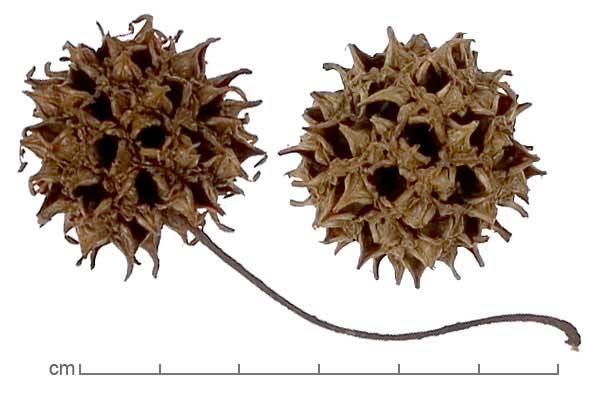
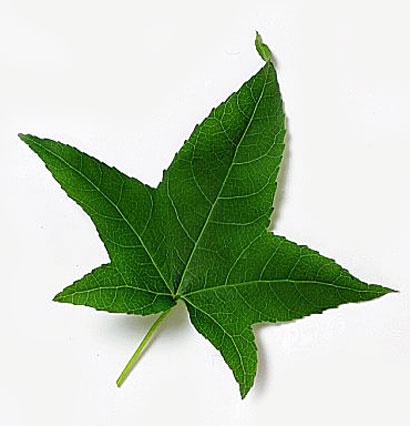
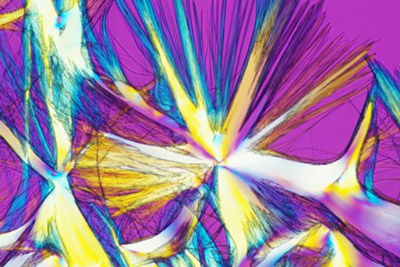
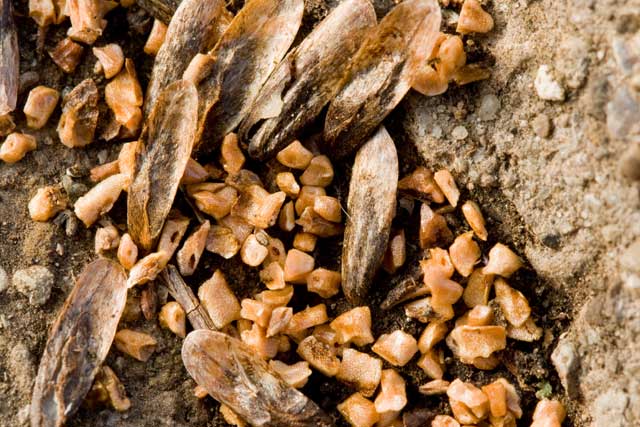
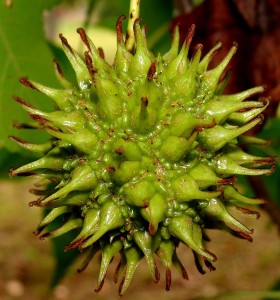
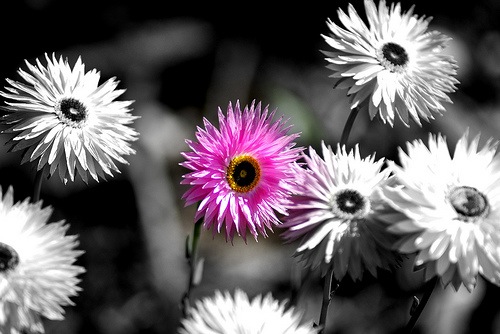
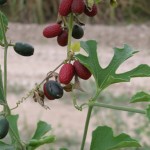
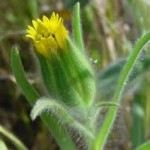
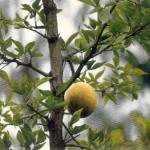
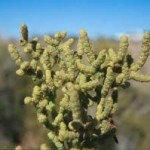
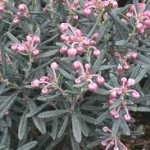
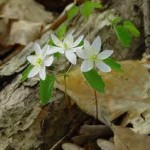
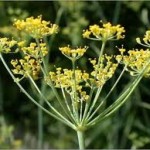
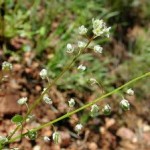
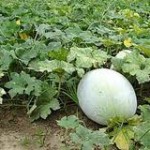
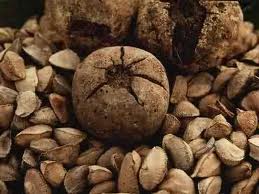
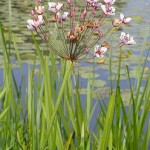
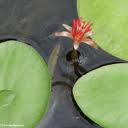
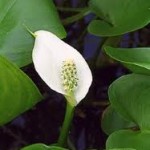
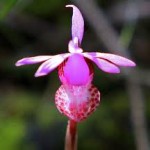
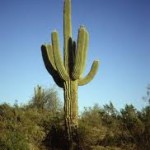
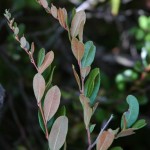
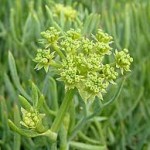
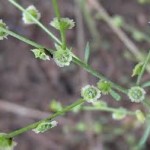
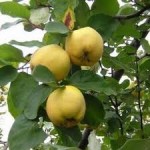
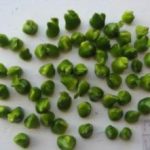
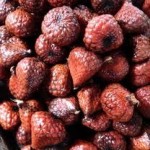
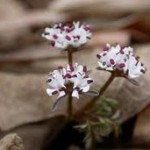
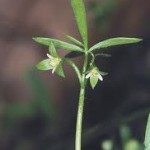
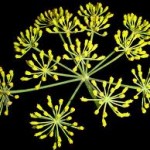
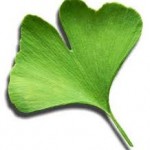
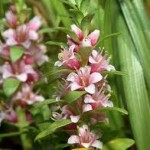
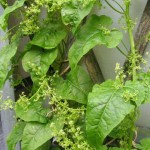
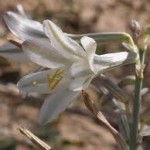
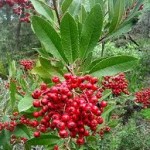
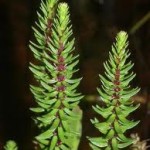
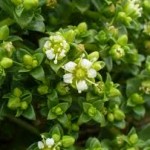
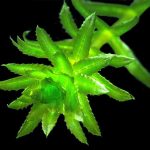
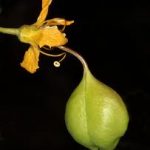
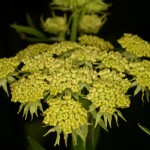
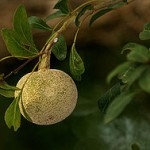
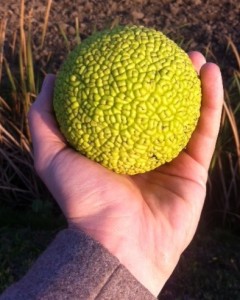
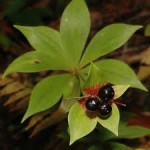
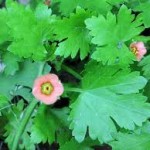
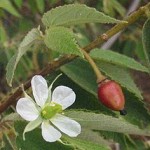
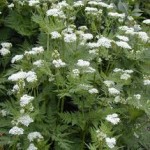
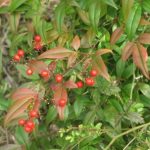
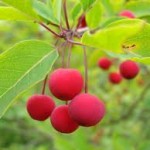
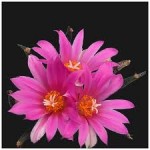
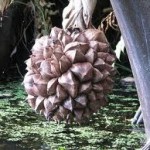
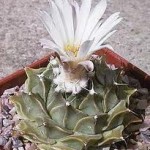
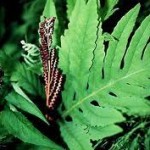
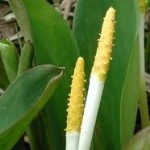
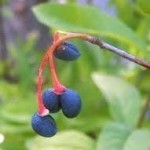 .
.